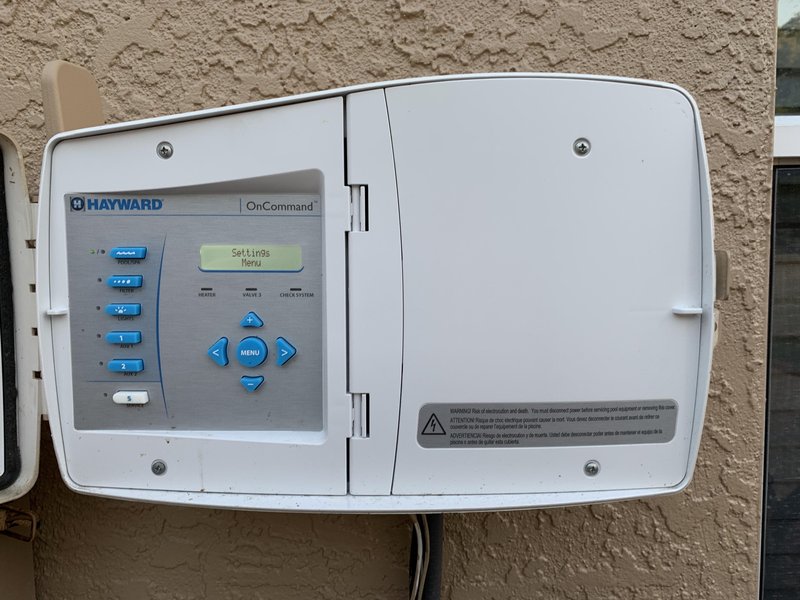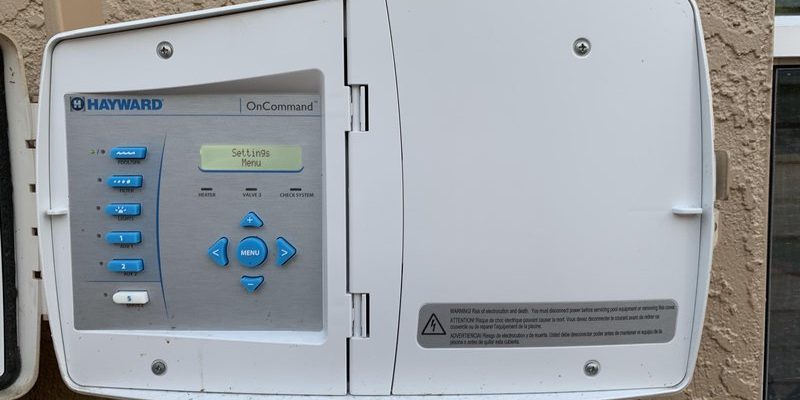
Here’s the thing: water and electronics aren’t the best of friends. Even though Hayward’s pool remotes are designed to spend time outdoors, they’re not invincible. A downpour or even a heavy mist can be enough to throw things out of sync. Think of your remote like a little spaceship. It needs all its systems intact—battery, code pairing, and a dry cockpit—to communicate successfully with the “mothership” (your pool controller). When rain sneaks in, that delicate balance can get wobbly in a hurry.
So if your Hayward pool remote is suddenly unresponsive after rain, there’s usually a simple culprit: moisture finding its way inside, causing connection troubles, or even shorting out the battery. Let me walk you through why this happens, what you can do to fix it, and how to help your remote brave the elements with fewer future hiccups.
How Hayward Pool Remotes Work (and Why Rain Throws Them Off)
Let’s break it down. Hayward pool remotes—like the popular AquaPod or ProLogic wireless units—work by sending signals back and forth with your pool’s control system. These remotes use a radio frequency (RF) connection, kind of like walkie-talkies for your pool equipment.
Here’s why rain is such a big troublemaker: Even though these remotes have a certain level of weather resistance, they’re not completely waterproof. Water sneaking into the buttons, battery compartment, or electronics can:
- Disrupt the remote’s power supply (dead or corroded batteries are common after moisture exposure).
- Short-circuit the small connections that let your remote “talk” to the pool control panel.
- Throw off the wireless signal—a little like trying to have a phone call during a thunderstorm with bad reception.
Pairing problems are also common after a storm. If your remote loses sync with the main system, you might need to re-pair or reset it. This isn’t always obvious right away—sometimes the remote lights up, but nothing happens on the pool side.
If your Hayward remote stops working right after rain, don’t panic. Half the battle is just knowing that water exposure is almost always to blame!
Common Reasons a Hayward Pool Remote Stops Working After Rain
You might be wondering, “Okay, so what exactly is going wrong when the remote gets wet?” Let me explain:
1. Moisture Inside the Housing: Even a few drops of water can get under the buttons or inside the battery compartment. This can short out the electrical contacts or cause sticky, delayed button responses.
2. Battery Issues: Batteries hate moisture. Water can drain them faster, cause them to corrode (look for white or green crusty buildup), or even break the connection so power can’t reach the remote’s circuitry.
3. Signal Interference: Wireless remotes use a specific RF code to pair with your system. Water can block or weaken this signal, just like a wall or thick hedge might.
4. Internal Circuit Board Trouble: If water gets deep enough, it can short the little chips and wires that make your remote “smart.” Often, this means you’ll need to let the remote dry out completely—even opening it up (carefully!) to speed the process along.
What To Check First: Simple Troubleshooting Steps
When your Hayward pool remote goes silent after rain, don’t toss it out just yet. Here are some basic things to check before assuming it’s dead:
- Remove the battery cover and check for any signs of moisture or corrosion. If the batteries look crusty, swap them for fresh ones after drying the compartment.
- Open the outer shell (if possible) to see if there’s visible water inside. Gently blot with a dry cloth and leave it open to air-dry somewhere warm (but not hot).
- Try pairing or resetting the remote. Sometimes, a power interruption causes the code link between the remote and control panel to break. Follow your manual’s steps for re-syncing—this often means holding certain buttons while powering on the device or using a pairing button on the control panel itself.
- Test the remote close to the pool controller. Weak signals can get worse after rain. Standing closer can help you figure out if it’s a signal problem, not just a dead remote.
If the screen or lights come on but nothing happens, you may just need to reset or re-pair the device. Don’t forget: it can sometimes take a few tries.
How to Dry Out and “Reset” a Wet Remote
Let’s say you’ve got a pool remote that feels damp or has obvious water inside. Here’s how you can try to save it:
Step 1: Remove the batteries immediately. Leaving them in can make things worse by causing corrosion or electrical shorts.
Step 2: Open up as much of the casing as possible. Use a small screwdriver if needed. Some models are sealed pretty tight, so go slow and gentle.
Step 3: Pat dry any visible water. Use a lint-free cloth. Don’t use paper towels—they can leave messy fibers inside.
Step 4: Let the device air-dry for at least 24–48 hours. Place it in a warm, dry place with lots of airflow. Some people swear by putting small gadgets in a bowl of uncooked rice or silica gel packs to help pull out the moisture. Just don’t try to rush things with a hair dryer or oven—you might melt the plastic.
Step 5: Reinstall new, dry batteries and test again. If it still won’t work, you might need to re-sync or reset the remote’s code.
Sometimes, a thorough drying and reset is all it takes to bring your Hayward pool remote back to life after rain.
When and How to Reset or Re-Pair Your Hayward Remote
This isn’t just a last-ditch move—sometimes, you have to reset or re-pair the device because water exposure can knock out its memory or code pairing. You might notice the remote turns on, but can’t control anything. That’s a classic sign it’s lost sync with the main pool system.
Here’s a standard way to reset or pair most Hayward remotes (double-check your specific model):
- Turn off the remote and remove the batteries for at least 30 seconds.
- Press and hold the “Sync” or “Pair” button on the remote while reinstalling the batteries.
- On the main pool controller, press the corresponding “Learn” or “Pair” button. Watch for indicator lights to blink or a confirmation beep.
- Test the remote’s functions (lights, pump, spa, etc.) to make sure the code reset took effect.
If this doesn’t work, your main system or remote might need a more advanced reset—or, in worst cases, replacement. But honestly, a simple reset or re-pairing does the trick more often than you’d think.
Protecting Your Hayward Pool Remote from Future Rain Damage
It’s no fun dealing with a dead remote every time the weather takes a turn. The good news? Most rain-related problems are preventable with a few simple habits.
Keep these tips in mind:
- Store the remote indoors or in a weatherproof box when you’re not using it. Even a little extra protection helps.
- Check the rubber seals and gaskets on your model. Over time, seals can crack or loosen, letting water slip inside. Replace them if they look worn out.
- Consider a soft, waterproof sleeve or cover—especially if you know storms are coming. This won’t make the remote fully waterproof, but it will buy you some time.
- Regularly inspect the battery compartment. If you spot condensation or crust, dry things out and swap the batteries sooner rather than later.
Honestly, treating your Hayward pool remote with a little extra TLC can add years to its life—and spare you the frustration of troubleshooting after every storm.
When to Repair, Replace, or Upgrade Your Remote
Sometimes, even your best efforts aren’t enough. Electronics have their limits, and repeated water exposure can slowly destroy the delicate parts inside your remote. Here’s a quick way to decide what to do next:
Repair: If there’s minor water damage (like stuck buttons or weak signals), a careful clean and battery swap might be all you need. If cleaning the contacts or resetting the unit brings it back, you’re in luck.
Replace: If you see major corrosion, visible circuit board damage, or the screen won’t light up no matter what, it’s probably time for a new remote. Hayward makes replacement models specific to your pool system, and the compatibility matters—universal remotes rarely work for specialty pool setups.
Upgrade: If you find yourself doing this dance after every rainstorm, consider upgrading to a newer, more weather-resistant Hayward remote. Some recent models have better seals and more reliable wireless connections. Or, if your pool controller supports it, switch to a smartphone app or wired control pad that’s less vulnerable to water.
Eventually, every pool remote meets its match. But knowing when to repair, replace, or invest in a better solution saves time and headaches in the long run.
Universal Pool Remotes vs Hayward-Specific Remotes
You might be tempted to grab a cheaper “universal” pool remote online after a rainstorm fries your Hayward unit. But here’s the rub: Pool control systems—especially brands like Hayward—often have proprietary code systems and pairing requirements. That’s a fancy way of saying only their specific remotes will “speak the right language” to your pool’s brain.
Universal remotes can work for basic TV-style gadgets, but pool systems involve safety features, timers, custom modes, and more. Sometimes, a universal remote won’t pair at all—or worse, will only offer partial functionality, meaning you lose access to spa controls, lights, or other features.
Hayward-branded remotes are designed to pair quickly and reliably. They also come with setup instructions, reset codes, and troubleshooting steps tailored to your pool’s model.
So if your remote dies after rain, it’s usually worth sticking with the brand-specific option—your pool will thank you for it.
Final Thoughts: Keeping Poolside Control Storm-Proof
A Hayward pool remote that stops working after a rainstorm can be a real buzzkill, but most of the time, it’s a fixable problem. Whether it’s moisture in the battery, lost pairing codes, or just a soggy circuit board, there’s usually a straightforward path back to easy, button-press poolside living. Take a few basic precautions, know how to dry out and reset the device, and you’ll save yourself plenty of frustration (and maybe a few soaked towels).
Next rainy day? Keep your remote dry, give it a little inspection, and you’ll stay in control—no matter what the weather throws your way.
